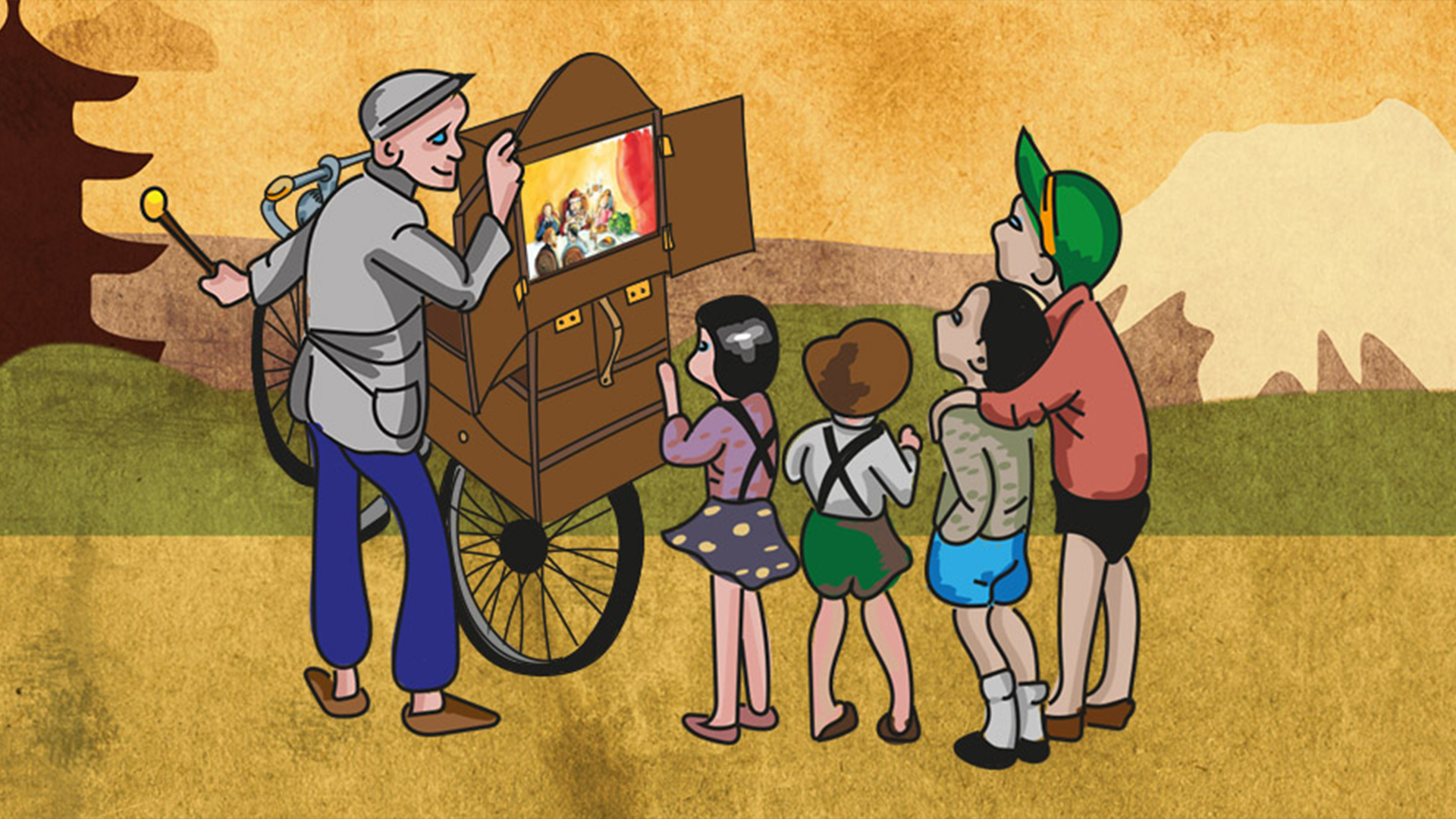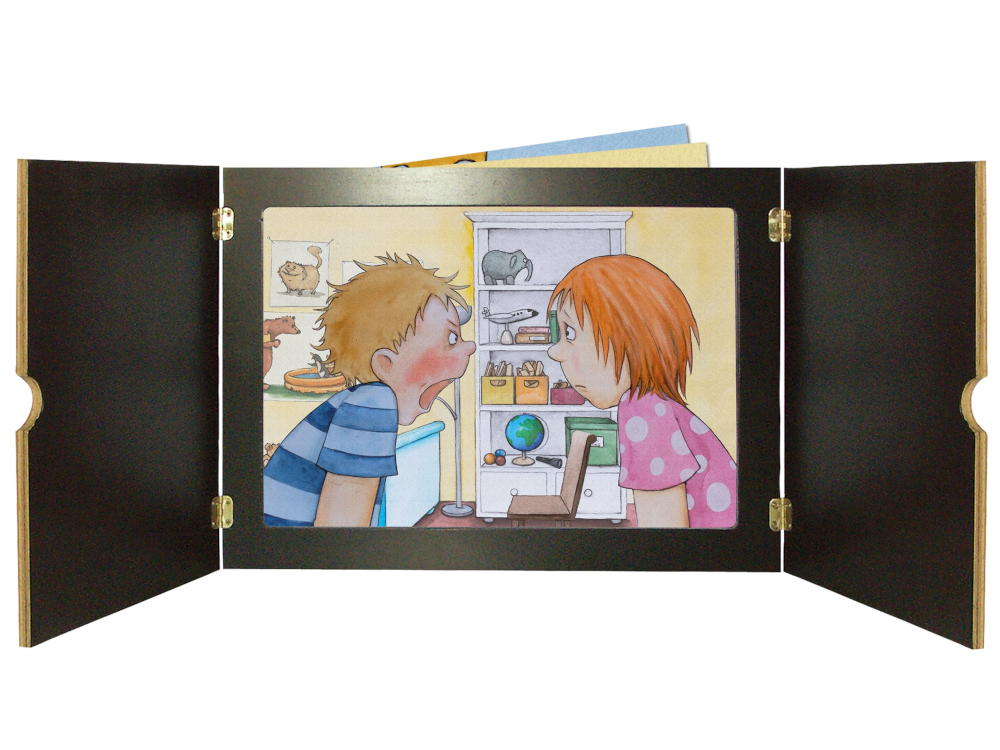 Preschool, Primary School, Training of Teachers
Preschool, Primary School, Training of Teachers


4678989 / 5565750
Kamishibai
Japanese Narrating Theatre
We spend a large part of our lives telling stories. Stories we read, listen to, watch – or tell others ourselves.
We learn from stories and they enable us to travel to the remotest countries or into the past or future in our thoughts. Thus we learn something about people and the world we live in.
Teacher:
Exactly, new apple trees grow there. The apple tree puts seeds in the apples so that it can reproduce.


Curriculum-centred and oriented towards educational standards
Matching
Kamishibai Theater
Das aus Japan stammende tragbare Erzähltheater für die Darstellung von Bildergeschichten im Format DIN A3.
Blogging
The weblog or blog, for short, as a medium is not much older than this century. Blogs came into being in the World Wide Web as ’messages from below’, as web pages from web creators who wanted to share their view of the world with the world. They are short notes, long texts, pictures, videos, which are posted loosely and at random intervals to the world for an undefined public.








